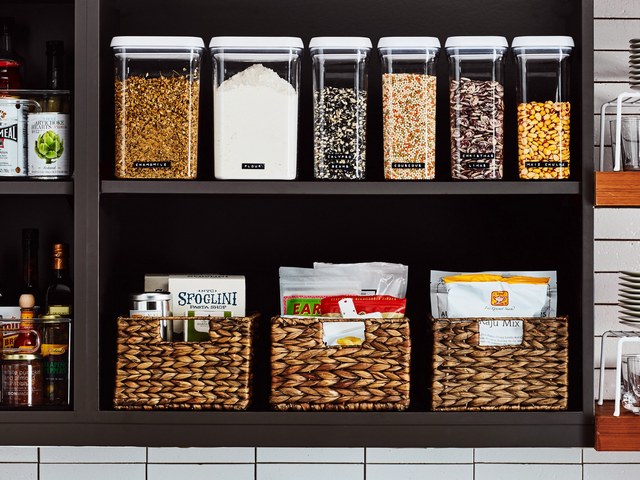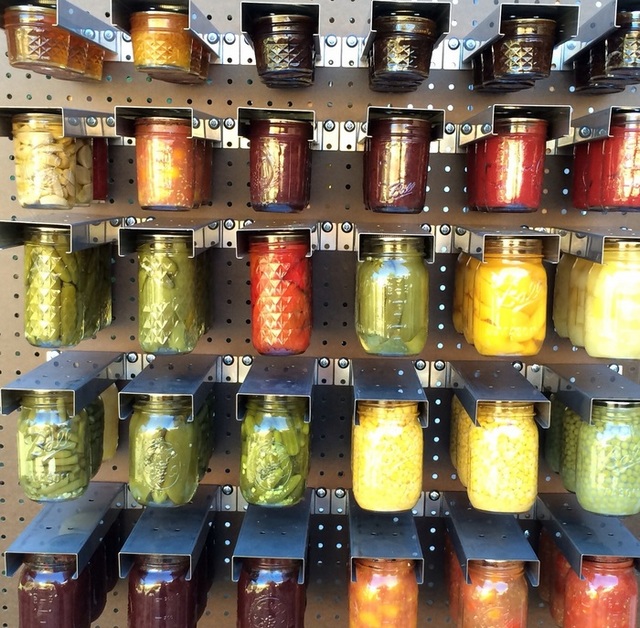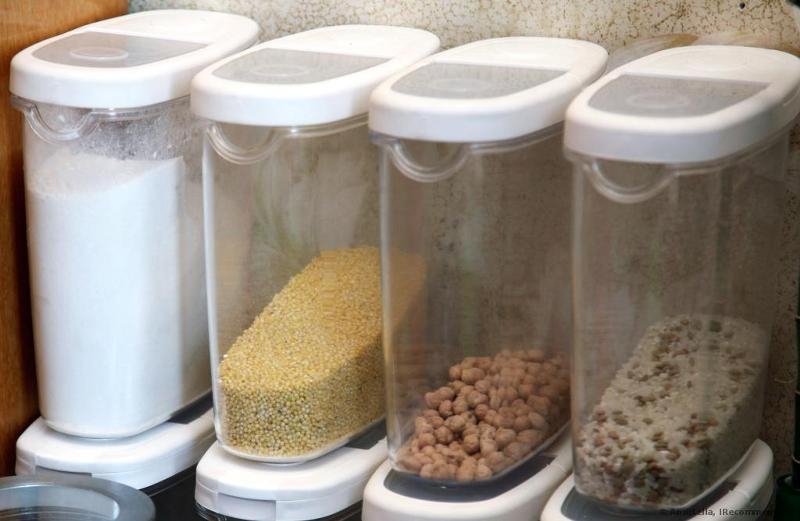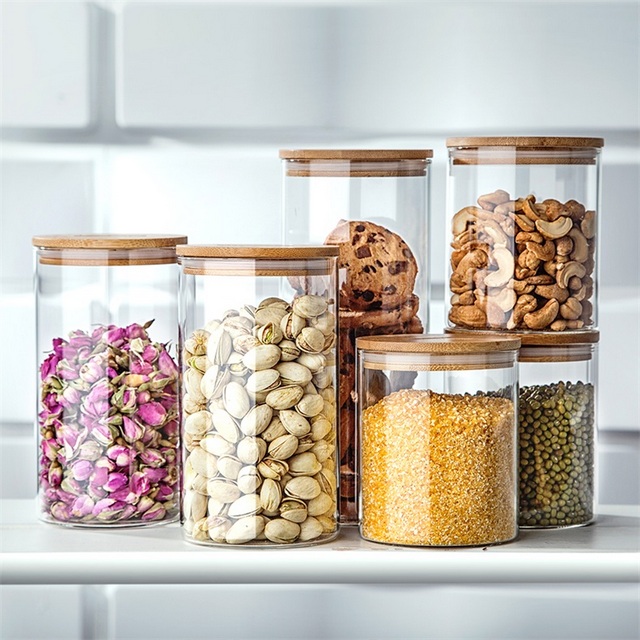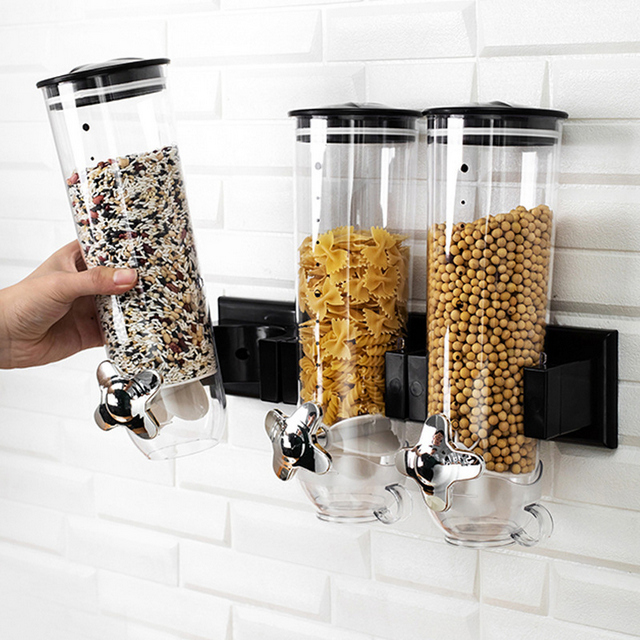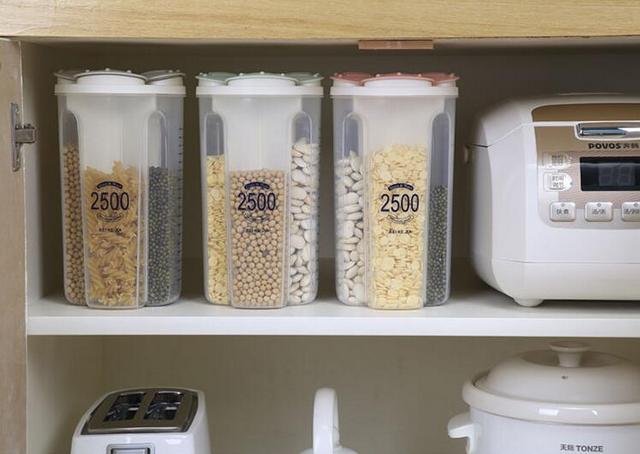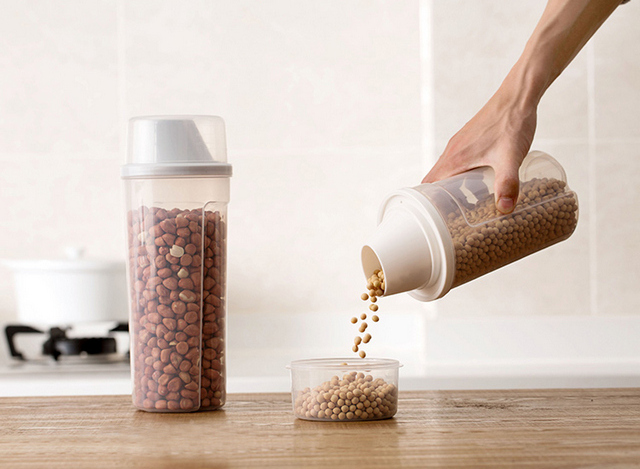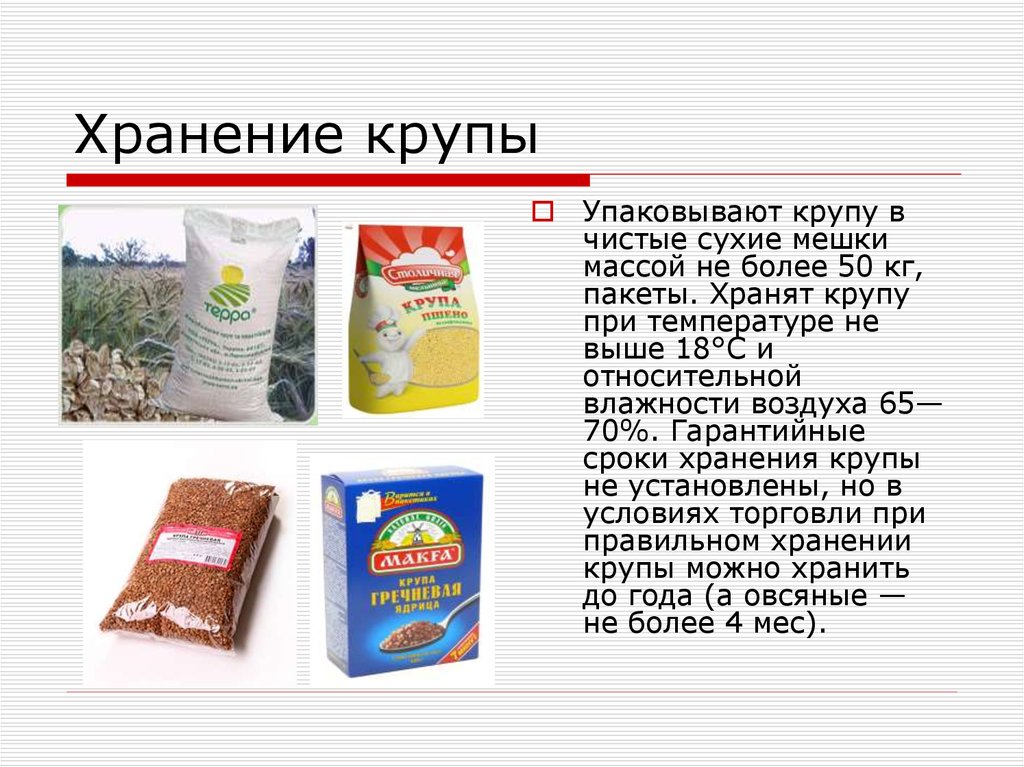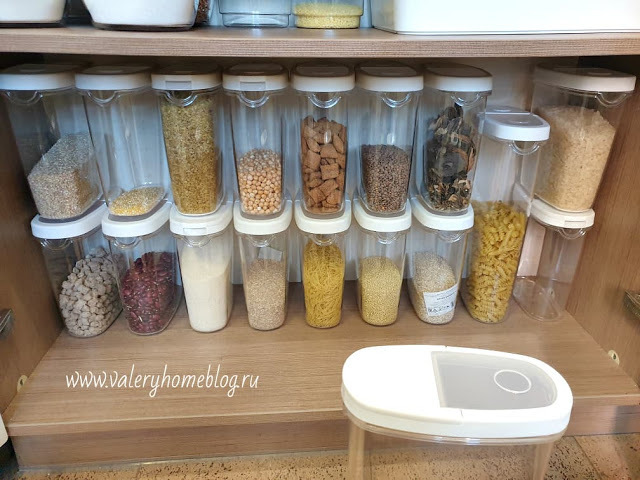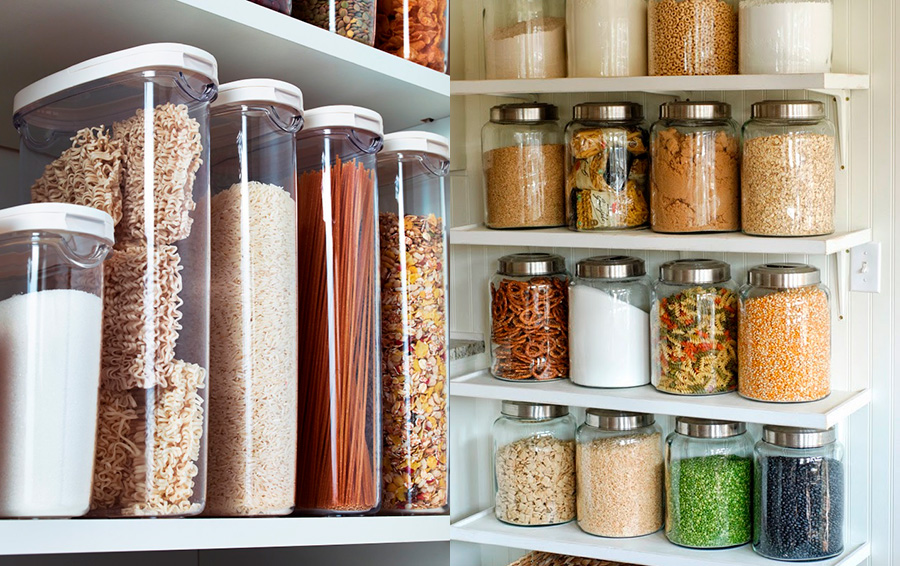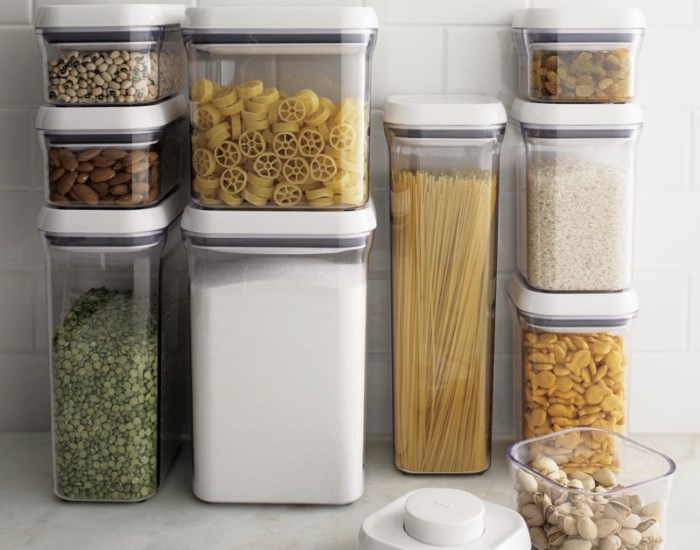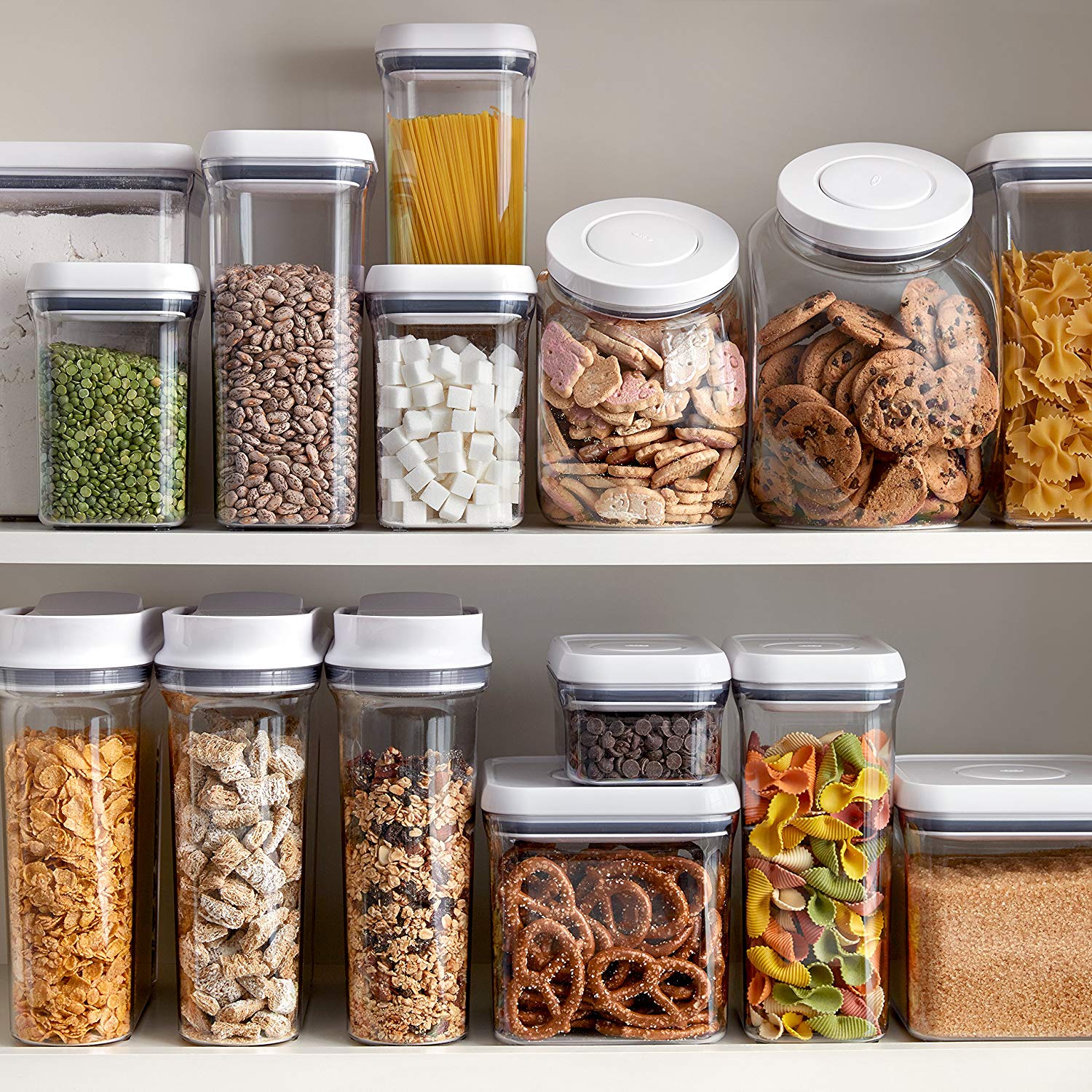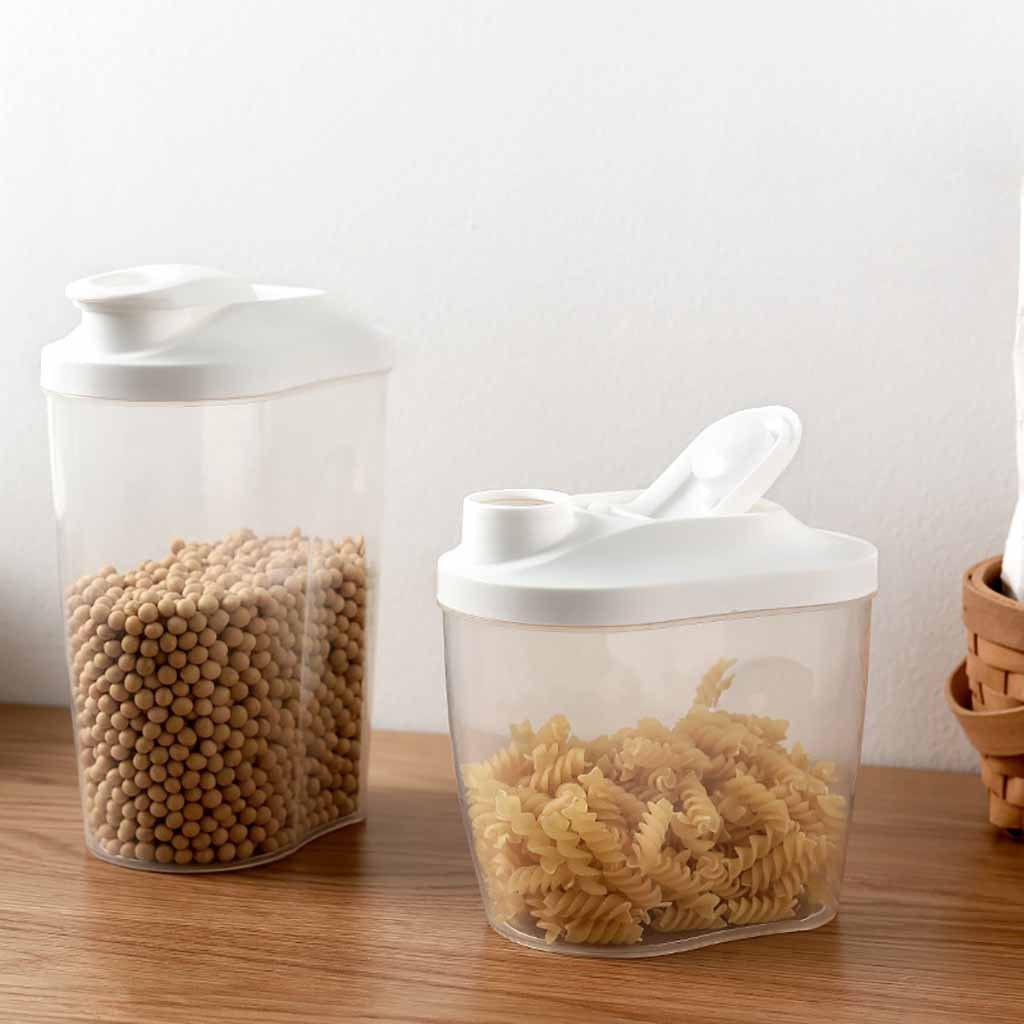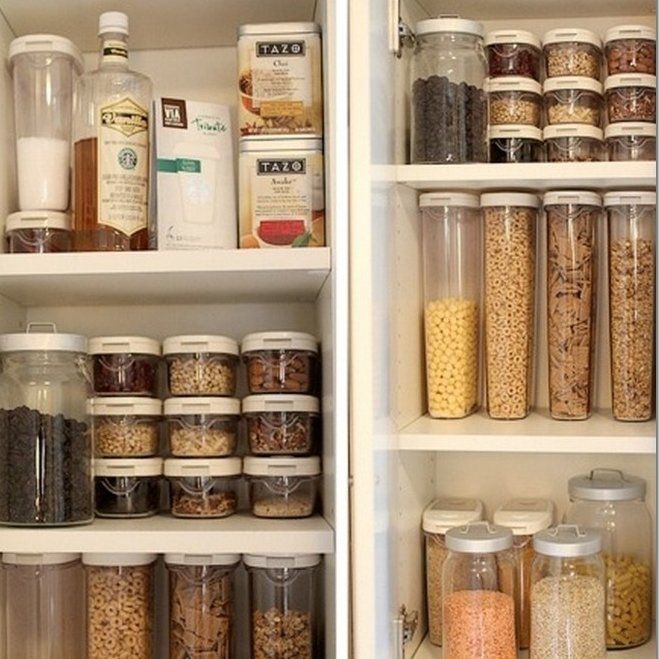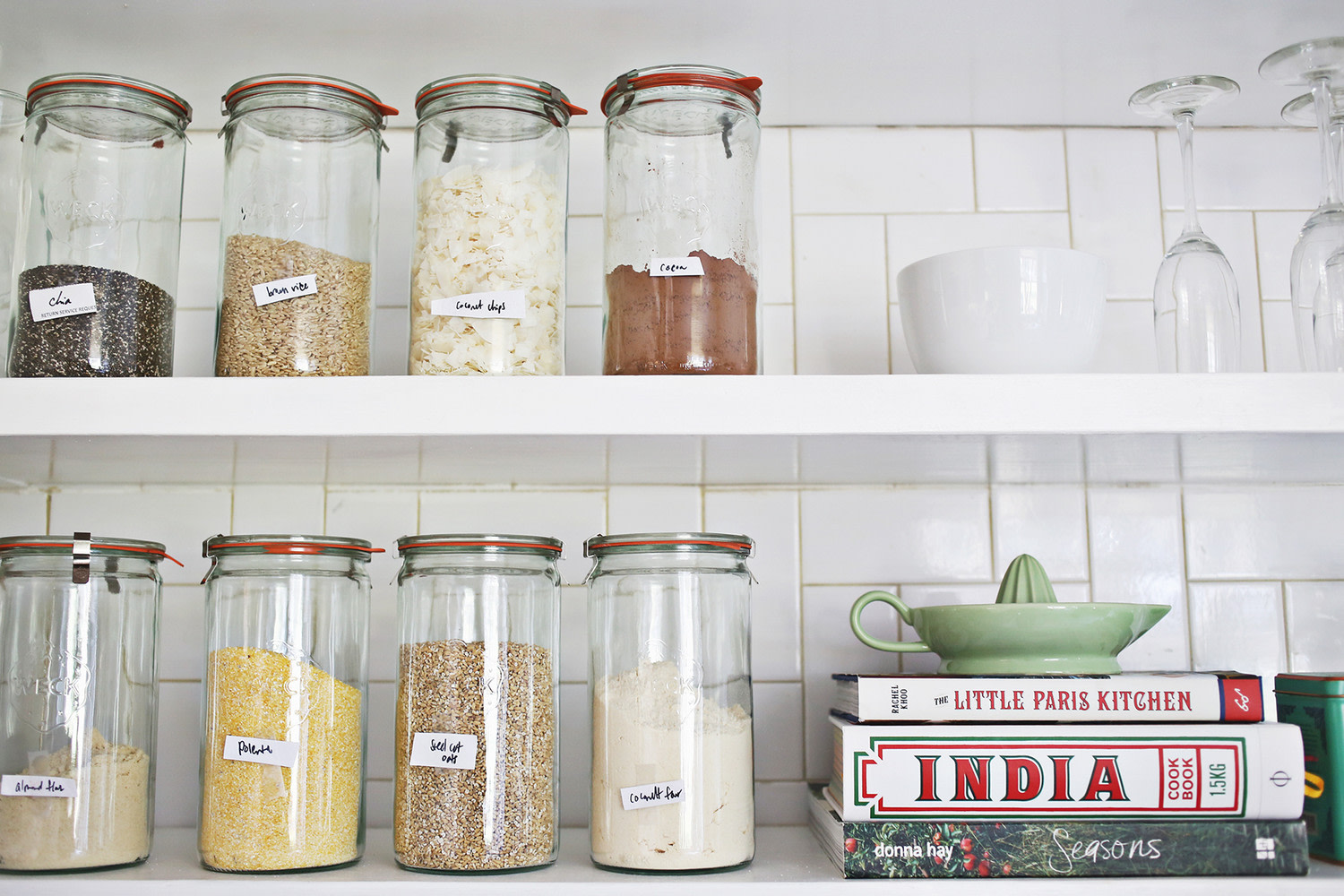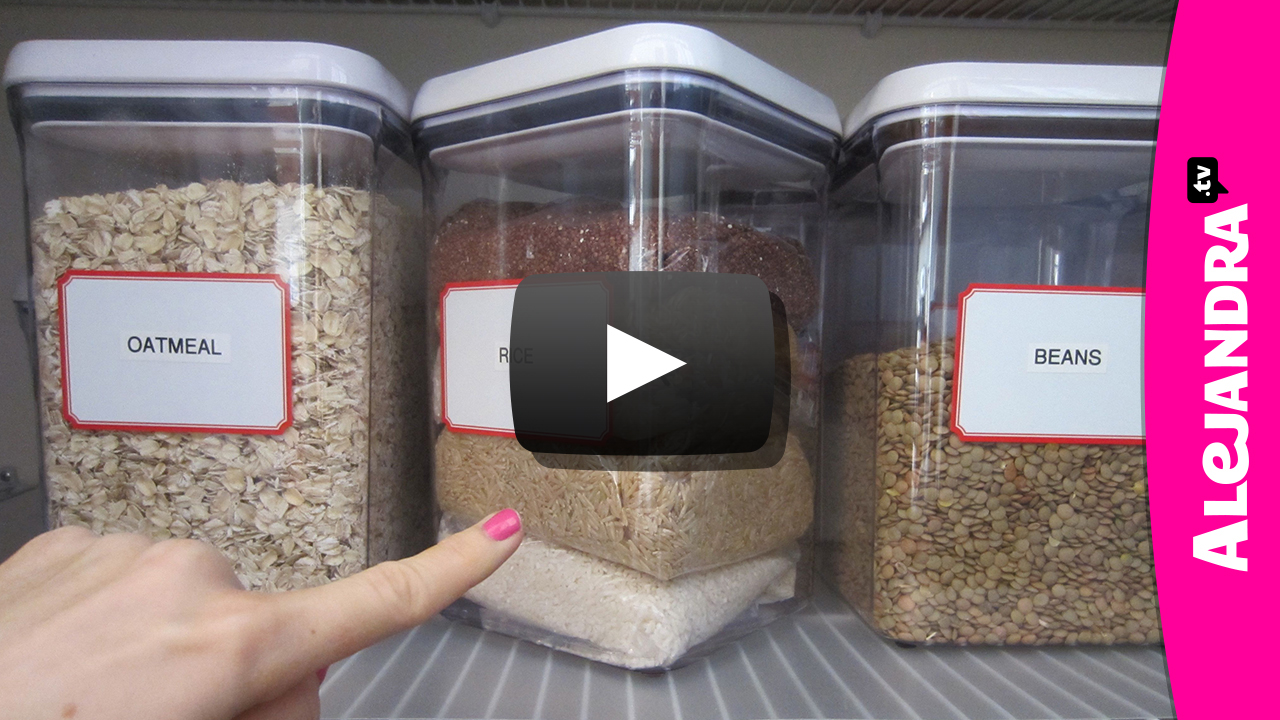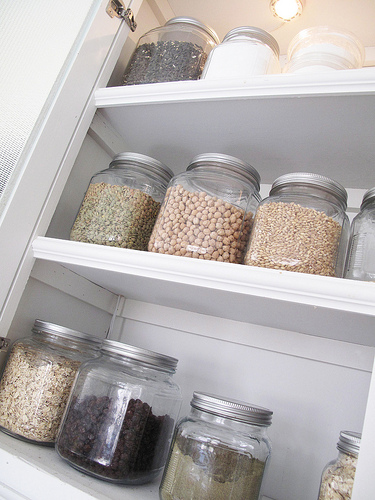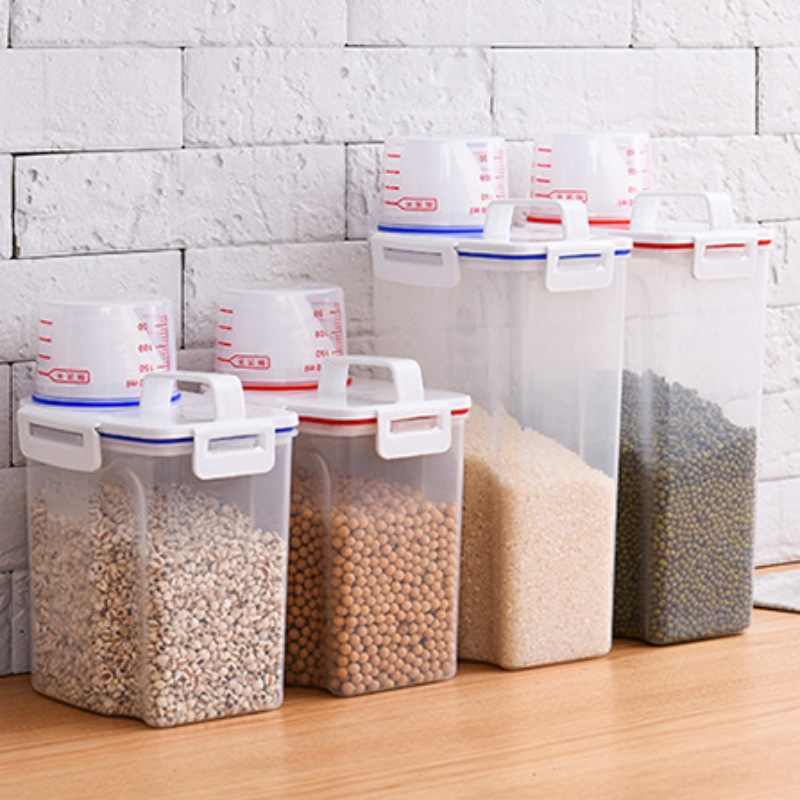Why is improper storage of food dangerous?
One of the enemies of free-flowing foods, especially cereals, is mold, which usually develops due to high humidity in the kitchen. Reproducing, it destroys products, as a result, an unpleasant odor is released, and toxins are formed. Eating moldy food is hazardous to your health.
Insects can also appear in bulk products. One of the most common pests is the Surinamese mucoid. This is a brown bug that starts up in flour, different varieties of cereals, and dried fruits. Unlike microorganisms, insects do not destroy cereals, but pollute them. But at a high concentration, pests or their waste products can lead to food poisoning.
Expired products, although visually and look normal, lose their taste and useful properties
Even if you know how to store cereals, it is important to remember that bulk products cannot last forever. If you prefer to shop for future use, first try to cook from products purchased a long time ago.
And in order not to confuse anything, you can stick stickers on the containers with the date of the bookmark of the content.
Oat flakes deteriorate the fastest of cereals - in 4-6 months, and flakes with all kinds of additives are stored even less. Rice can be stored for about 1.5 years, peas and buckwheat - up to 2. The rest of the cereals are best consumed within 9-12 months. Plain pasta will last for about 1 year. And pasta with various additives, such as tomato, is recommended to be stored no longer than 3-5 months.

Types of containers
According to the material from which containers for storing bulk products are made, they are distinguished:
- Plastic is the most budgetary option that fits into the interior of any kitchen due to its neutral transparent color. The emphasis is usually on the color of the lid. They are lightweight and easy to clean. They are produced in different volumes: from the smallest (for spices) to large (for flour and sugar). There are tall, narrow containers - these are convenient for storing spaghetti or long pasta. They are dishwasher safe. When choosing such containers, one should not save too much: cheap plastic often has a specific smell and does not provide a tight seal. Choose PP-labeled polypropylene products.
- Glass - more durable containers that also look appropriate in any kitchen, but at the same time look more expensive and prettier. Often made of impact-resistant glass, which means a higher price. Usually they are transparent, but there are also models made of colored glass. It is easy to look after them and the contents of the jar are always visible. Of the minuses, we can note the great weight and fragility in comparison with plastic containers for bulk products.
- Tin cans - such containers are distinguished by a variety of interesting colors that bring a bright touch to the kitchen interior. Suitable for storing any cereals, teas, coffee and medicinal herbs. However, they do not differ in durability due to the tendency of tin to corrode.
- Ceramic are very atmospheric containers, ideal for country kitchens as they are usually beautifully decorated with matching designs. Vary widely in cost depending on the quality of the material. Like glass, they are quite heavy and fragile, in addition, it is impossible to achieve tightness in such jars.
- Made of stainless steel - such containers look restrained and stylish, look good in modern or high-tech kitchens. They are durable, but capricious in their care: like everything made of stainless steel, they leave fingerprints and stains. And some argue that the contents of such cans acquire a metallic flavor.
Effective tricks from experienced housewives
In addition to all the listed recommendations, rules and nuances, young housewives should adopt a few more useful techniques. They will help maintain the quality of the products available in the house, but they will not cause much trouble.
- Purchased cereals (rice, buckwheat, etc.) immediately after purchase and in their original packaging should be put into the freezer for a couple of days. This guarantees the prevention of the appearance of insects in the product. Some cooks prefer not to freeze, but to ignite the mass in an oven, in a frying pan or in a microwave oven.
- At the bottom of a container with flour, sugar or cereals, cloth bags of salt are sometimes laid out to scare off bugs.
- If you put a couple of red hot pepper pods, a clove of garlic, or dried lemon peel in the rice, you don't have to worry about the appearance of insects or an unpleasant musty smell.
- Bay leaves, metal spoons or twisted foil are spread into flour for the same purposes.
- If you do not want the salt to collect in lumps after several months of storage, you should put a tablespoon of rice grains in it.
- Ants are often found in sugar. This will not happen if you put dry lemon or orange peels in a bag or container.
Finally, regular spring cleaning will be the ideal prevention of unpleasant consequences. In addition to inspection, you need to wipe the shelves with containers with a weak vinegar solution. And to get rid of its smell, you can put a cotton pad with a drop of lavender oil in the cabinet.
Recycled storage
To keep the processed pitted cherries longer, use the following methods.
A gas oven is used:
- The berries are carefully sorted out, washed under running water and dried.
- All bones are removed.
- Spread on a baking sheet in one row.
- Preheat the oven to 50 ° C, but no more, otherwise the fruits will be baked and not dried. Put a baking sheet in it for 2 hours, then increase the temperature to 75 ° C. Finished dried berries do not stick together and do not release juice.
Drying in an electric dryer is carried out according to the instructions for it. Prepared cherries are laid out in one layer. Dried within 24 hours.
To freeze cherries:
- Washed and dried fruit without pits is placed in a bag with a fastener or a regular thick plastic bag. It will save space in the freezer.
- Leave in the freezer for 2-3 hours, then stir the bag so that the berries do not freeze to each other.
In the future, you can take the required amount for the preparation of berry compotes in winter, mashed potatoes, yogurt, baked goods.
For compotes and preserves, red late varieties with a high acid content are chosen. The berries give the drink a rich color, do not boil over during heat treatment. Before canning, the cherries are washed well, rotten or spoiled berries are removed. They put it in a jar and roll it up, observing the recipe and dosage of ingredients.
The importance of proper storage of bulk components
Forced financial costs that arise when the rules for storing bulk goods are not followed, go by the wayside when it comes to the health of family members. And it can be seriously affected if you do not know how to store cereals or ignore simple rules. The reasons for the problems can be as follows:
- The appearance of mold. The phenomenon occurs against a background of high humidity in the kitchen, which even the dishes cannot interfere with. This parasite can spoil not only rice, cereals or pasta, spices, flour, sugar can also suffer. Not only does the vital activity of molds spoil the taste and smell of the components, during these processes toxins are released that poison the human body.
- Parasitizing the Surinamese muco-eater. Despite such a telling name, a brown bug can spoil not only flour, but also spices, rice and other cereals, even dried fruits. Insects do not destroy the product, but contaminate it with the products of their activity.If the content of these substances reaches a high concentration, there is a risk of food poisoning.
- The appearance of a moth. And these insects like to lay their larvae in containers with food. They can be found during visual inspection, but sometimes the hostesses simply do not notice them. So, if a moth was spotted in the kitchen, it is likely that it has already ruined some supplies.
- Early deterioration of components. Improper storage of cereals often leads to the fact that they begin to deteriorate ahead of schedule. They may look quite normal, but their smell and taste will suffer, and useful components will be destroyed. Dishes from them will not turn out the same as before.

Despite the fact that the shelf life of many food products, even after opening the package, is calculated for months, it is recommended to use them faster than the permissible indicators. Rice can last 1.5 years, pasta made from flour alone - 1 year, pasta with additives - only 3-4 months. Buckwheat and peas retain their condition for up to 2 years, but their taste begins to deteriorate a little earlier. Oatmeal should not be stored longer than 5-6 months.
Storage periods
So, we have already said that the shelf life of cereals varies. The most "long-playing" in this regard is buckwheat - if the right conditions are created, cereals can be stored for up to two years! Maybe that's why she disappears from the shelves the fastest.
But millet should be eaten faster. Groats can be stored for only four months - a lot, but do not forget that the shelf life is counted from the one indicated on the package as the production and packaging time, and not from the date when you bought or opened the cereal.
Semolina and rice are stored for up to a year, and pasta for up to six months. Hercules will live the same length of time in your closet, but if the oatmeal contains various additives such as dried fruits, berries, nuts, then the shelf life can be significantly reduced.

Savings must be economical
Others are bought not at all because they plan to spend the next month without leaving their homes, they are not afraid of the coronavirus, but an increase in prices for essential goods. Some believe that the epidemic will make the global economy so unstable that instead of forecasting prices, it is much easier and safer to buy everything you need now.
Comic fans are thrilled: Zach Snyder returns to Justice League
Feelings of security and other reasons why we sleep under the covers in the heat
Wherever you look, green spaces, or why snow is not white in Antarctica
How to store cereals
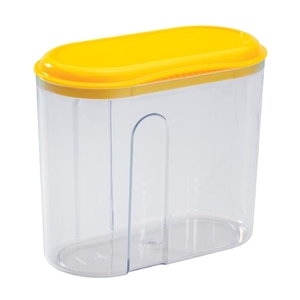 Whatever containers you get for storing food, there are a few simple rules to keep in mind. To preserve the cereal for a long time, after purchasing it in the store, roast it a little in the oven or microwave. Indeed, in the purchased rice, millet or pearl barley, there may already be bug larvae, even if they are not visually observed. An alternative option is to "freeze" them for 3-4 days in the freezer or on the balcony in winter.
Whatever containers you get for storing food, there are a few simple rules to keep in mind. To preserve the cereal for a long time, after purchasing it in the store, roast it a little in the oven or microwave. Indeed, in the purchased rice, millet or pearl barley, there may already be bug larvae, even if they are not visually observed. An alternative option is to "freeze" them for 3-4 days in the freezer or on the balcony in winter.
A few more tips for proper storage:
- Containers for storing bulk products should be in the cabinet. Avoiding direct sunlight will extend their shelf life.
- Put garlic, chili pepper or bay leaf in a container for cereals - the beetles do not like seasoning, and under these conditions they will not multiply.
- To eliminate excess moisture, it is better to place a bag of salt next to the jars.
- Keep in mind that everything has a finite shelf life, make sure that bulk products do not lie with you for more than 3-4 months. Rice with corn can be stored for more than a year under the right conditions. Wheat, pearl barley, oat and buckwheat groats are stored quite well. But millet, if it lies for a long time, becomes rancid. Semolina and flour can "live" in the refrigerator for a little over a year.
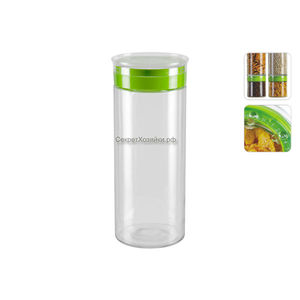 In the absence of a deficit, there is no need to store strategic stocks of cereals at home. Still, staleness is not the best way to affect the taste. It is much easier to come to the supermarket when needed and buy a fresh product.
In the absence of a deficit, there is no need to store strategic stocks of cereals at home. Still, staleness is not the best way to affect the taste. It is much easier to come to the supermarket when needed and buy a fresh product.
Today there are many options for storing cereals for every taste and wallet.
The main thing is, when buying in a store, pay attention to the safety of the material from which they are made and compliance with sanitary standards
You should not buy frankly cheap containers for cereals, after all, this is a durable product, and it is important that it retains a presentable appearance and functionality for many years
How much to store cooked rice in the fridge and freezer
Boiled rice groats are stored exclusively in the cold, given that it will quickly absorb the surrounding aromas. It should be stored in a sealed plastic food container on a separate shelf.
Cooked rice can be stored longer when it is free of oil and other spices. Only then can one expect that it will last 2 - 3 days. How long boiled rice can be stored in the refrigerator also depends on the ingredients used:
- porridge cooked with the addition of milk - 24 hours;
- porridge without milk and butter - 3 days.
It is advisable to additionally process the finished product with a high temperature before use, given that it was on the refrigerator shelf for several days.
Storing cooked rice in the freezer allows it to preserve its consumer qualities for several months. And it is convenient to defrost it in a microwave oven, where a certain mode is provided for this.
Storing cooked rice without a refrigerator will not work for long. After a few hours, the product will begin to turn sour.

Possible problems
Even an experienced housewife can have a situation when the canning began to ferment, the jar is cracked or the lid is swollen.
Sugar
Candied jam indicates that too much sugar was added during cooking or simply overexposed over the fire.
This is not a problem, it can be rehabilitated. There are several options for this:
- Move the vessel with the sweetness into a deep vessel with water. After boiling, leave the mixture over low heat until the sugar is completely dissolved.
- Add 50 ml of hot water per 1 liter of finished product to the jam. Boil for 5 minutes.
Such sweets should be eaten as soon as possible, because long-term storage is contraindicated for them.

Mold
Even if a small area is affected, you can be sure that the entire product is also infected. Most often, you can observe a similar situation with jam, tomato paste, dairy products. Methods for dealing with an unpleasant substance are not complicated. Heat treatment, unfortunately, will not bring the desired result. The high temperature will not affect the toxins in any way, so there is no point in disposing of contaminated food in the microwave. The best option would be to completely get rid of the spoiled product.
Fermentation
Unfortunately, even experienced housewives have incidents with home canning. And it seems that the necessary standards and instructions have been followed, but the lid is swollen or a strange smell is heard from the finished product. It is easy to fix the situation. To begin with, using a colander, you need to strain the contents of the jar, separating the juice from the berry mass. After that, add 200 g of sugar per 1 liter of liquid, boil.
Selection and preparation of berries
It depends on the correct choice of fruits whether it will be possible to preserve them for a long time.
What to look for when buying cherries in a store or market:
- Colour. Red varieties should be dark, firm and shiny. These are the first signs of ripeness and freshness of the berries.
- Damage. The absence of dents and cracks indicates neat transportation.
- Those that are rotten, spoiled or with signs of fermentation are not suitable for long-term storage.
- Choose a sweet cherry that has a stalk.It contains a small amount of moisture, it protects against the ingress of bacteria. Berries without tails are poorly stored, the fermentation process begins quickly in them.
- The stalks should be green and fresh. Brown and lethargic - a sign that the fruits were plucked a long time ago.
- Do not buy cherries that are sold in buckets or deep containers. The lower layers of the berries are choked by the severity and are no longer suitable for storage.
Suitable containers for transporting and selling fruit are wooden or plastic boxes with a depth of no more than 20 cm.
To keep the harvest as long as possible, they adhere to the following rules:
- pick berries early in the morning;
- scatter them on a blanket and sort them out, separate whole fruits from rotten, spoiled and crushed;
- the cherries are not washed, the dew residues on the surface of the skin are dried with a paper towel.
The varieties most suitable for long-term storage
Any varieties are suitable for storage at home, only the timing and methods differ slightly. For example, sweet cherries of light early varieties are stored for no more than 5 weeks frozen or 2-3 months in dried (in the form of raisins). Red late varieties are stored for up to 6 months or more.
In industrial conditions, only late varieties with a high acid content are stored:
- light: Bryansk pink, Exhibition, Francis;
- dark: Napoleon, Regina, Recordist, Tyutchevka.
Some helpful storage tips
There are many nuances of storing bulk products, but it is not difficult to translate requirements from theory into practice. They are universal and apply to all similar products:
- The temperature in the kitchen (or a particular cabinet) should not exceed 19-20 ° C. Optimum humidity is up to 65-70%. There are several exceptions to this rule. It is better to store millet, oatmeal, semolina and pearl barley at a temperature not higher than 16-17 ° C. Otherwise, the vegetable fat in the components will start to deteriorate and the products will have a bitter taste.
- From a damp and cold kitchen, basement, room with poor ventilation, such components should be removed to a closet or other suitable place. Some housewives think that products placed in glass jars are protected from negative influences, but this is not so.
- It is not recommended to take the components with a damp spoon, this can cause damage to the remaining mass, provoke the appearance of mold. Avoid holding open containers over boiling liquid, a sink, or a heat source for the same reason.
- Dishes with groceries should not be near fragrant food and household chemicals. This can damage its smell and taste.
- Inventories are recommended not to be renewed as they are used, but to be spent to the end. Many housewives simply add products that are running out, which is why unused residues constantly remain at the bottom of the container, which gradually deteriorate.
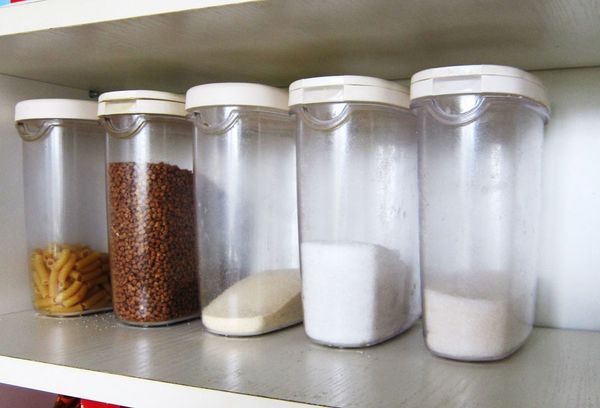
After mastering the theoretical part of the material and establishing a suitable place for storing food, you can start purchasing profile utensils. This is also a rather troublesome process, fraught with many nuances.
Flour storage rules
Flour is definitely in everyone's house, because this product can be used to bake bread and various sweet products, which significantly saves the family budget. But the fact is that flour, by its nature, is a favorable habitat for insects and worms. Therefore, if it is stored improperly, unpleasant inhabitants will surely start in it, which will simply spoil the product for us.
We will share with you detailed instructions on how to store flour at home so that it does not spoil with you:
- Constantly monitor the humidity and temperature of the air in the room in which you store the flour. It is best if the humidity is 60% and the air temperature is 15 ° C.If the temperature is 3 ° C higher, it's okay, the main thing is that it does not rise above the 20 ° C mark, otherwise the flour will begin to lose its beneficial properties, mold will appear in it and worms will start.
- Make sure that the room where the flour is stored is free of strong odors such as paint or varnish. Flour is a product that quickly absorbs all pungent odors.
- Consider the type of flour when storing it:
- wheat flour cannot be stored longer than 8 months
- soy - no more than 12 months
- rye - no more than 6 months
- corn - no more than 5 months

- You need to store flour at home in a container made either of paper or of high-quality fabric. Just before pouring the flour into a container, it must be dried very well on parchment. If you buy flour in bags, it is better to use plastic containers for storage.
- Even if it happens that some insects are in your flour, this is not a reason to throw it away, you can just sift the flour and transfer it to another container.
- Follow the wise advice of our grandmothers, who resorted to some tricks so that no harmful inhabitants would start in the flour:
- soak fabric containers for flour in saline solutions;
- place a few garlic cloves in a container with flour, just do not peel them, remember that the pungent smell of this vegetable will quickly absorb flour into itself;
- if you store flour in a paper container, then place several calendula flowers on its bottom, which will drive away all pests and allow them to settle into flour;
- stick a few nails into the flour - the reliability of this method has not been very verified, but our grandmothers did this and believed that nails scared away insects and did not allow them to settle in the product (just before using the flour containing the nails, make sure that there were no fragments left from them, rust and other harmful substances).
Before purchasing flour from a store, research its quality immediately. If it has a bitter, sour taste, the product has an unpleasant odor, and it is cold, then you definitely should not buy it, because it is probably already stale, and in the wrong conditions. We advise you to purchase the product by weight, not in packaging, so that you have the opportunity to test it in all respects.
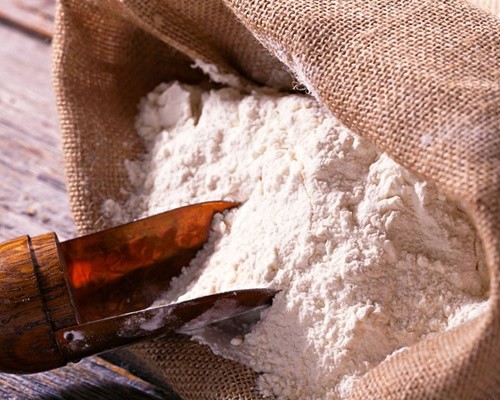
Be sure to follow all of the above instructions for storing cereals and flour in order to preserve your food products of high quality and correctly. Remember that the health of your household will depend on this, which every mother and loving wife should take care of first of all.
Features and shelf life of various types
Different types of product have their own storage rules.
Ham and boiled
This type of sausage can be stored for up to five days, subject to the following conditions:
- the temperature inside the chamber is not more than +7 degrees;
- wrapping in foil will help preserve moisture in the product;
- the cut from winding will be saved by oil treatment, after which the stick is wrapped in a film;
- storage in a vacuum container is ideal;
- it is not recommended to freeze ham and boiled sausage (the taste and shape of meat products deteriorates).
Sausages and wieners
They are considered a type of cooked sausage. The shelf life depends on the constituent ingredients and the casing material. The more preservatives, the longer the acceptable shelf life. The minimum shelf life is five days.
Home
The freshness of such a product lasts longer (up to nine days):
- Fat will help prolong the freshness of homemade sausage. It is transferred to a glass container and poured over with fat. Taste qualities remain in this form for up to 60 days.
- It will be possible to extend the shelf life of the sausage even if it is frozen.
Liverka and bloodworm
This type of sausage is stored only in a cool, dark place where the temperature does not exceed +5 degrees.If the product is made independently, then it is permissible to store it in the freezer for six months.
Smoked product
This type of meat product is stored in a dark, cool place with good air ventilation. The air humidity level is maintained at around 78%, the temperature should be around +5 degrees.

It is allowed to freeze the product, then the shelf life is increased to 72 days. Hot smoked sausages should be stored at a temperature of +5 degrees. The freshness will last for 20 days. In the case of cold smoking, the terms are increased to two months.
Doctoral
To preserve the freshness and taste of this product, the following conditions must be met:
- if the sausage stick has already been started, then the shelf life is not more than a week;
- unopened packaging can be stored in the refrigerator at a temperature of +1 to +7 degrees up to 3.5 weeks;
- it is not recommended to freeze this type of meat product.
Uncooked smoked
If the original packaging is not opened, then the product remains fresh for up to four months, but provided that the air temperature is not higher than +12 degrees, and the humidity is kept at 77%.
If the stick of the raw smoked product is dry, then wrapping it in a damp piece of cloth will help to restore its original taste. In this form, the product needs to be held over steam for several minutes. In the freezer, this type of finished meat product can lie for up to a year, retaining its taste and quality.
Dry-cured
This type of product is stored for the longest time:
- In a dark, cool place, the shelf life can be up to 5.5 months.
- At room temperature, storage is permissible for up to four weeks.
- The room where such a sausage is stored must be well ventilated.
- Air humidity should be 78%.
- The taste of the product deteriorates with sharp temperature fluctuations and the presence of a draft.
Horse
These are dry-cured products that need to be stored at a temperature of +5 degrees. The humidity should be 79%. Under these conditions, the stick will remain fresh for six months.

Livernaya
Such a product is classified as a homemade variety of sausage products:
- It is better to wrap a freshly prepared product in paper and put it in the freezer compartment. The shelf life under such conditions is six months.
- If it is supposed to be stored in the refrigerator, then it is recommended to put the sausage in a ceramic dish and fill it with fat. The product will be good for consumption for 5 months.
- Storage of the product in the refrigerator under normal conditions is no more than two days.
Ready cuts
The expiration date of the slices must be indicated on the label. In most cases, the time depends on the type of factory casing and the variety. Raw smoked and dry-cured sausages are stored at a temperature of +5 degrees. The duration of the preservation of freshness in this case is a week. At temperatures up to +14 degrees, the shelf life is reduced to 6 days.

